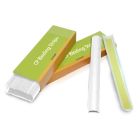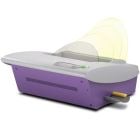How Libraries Can Save Money Using Their Powis Parker Fastback Binding Machine
Every year it seems like budgets get tighter and tighter for both school and public libraries. Unfortunately, a large amount far too much of this budget ends up getting spent on replacing trade paperback books that have fallen apart or buying new trade paperbacks that will soon fall apart. However, school and public libraries that own a Powis Parker Fastback Binding Machine can put their machine to use and can extend the life of these books.
Most trade paperback books are mass manufactured by publishers for occasional use by private individuals. They are made to be read through a few times without falling apart. However, popular books in a library get far more usage than this. Within 4-5 reads, the book block can begin to separate from the cover and some of the pages can begin to fall out of the book. This is partially because the book block is not fully seated into the glue during the initial binding process. Using your Fastback 15xs or other fastback binding machine (the model 11, 8x and 9 will work but have limited capacity compared to the model 15) you can take your brand new books and extend their life through a simple process. Here is what you need to do.
1. Take the brand new trade paperbacks when they first arrive from your supplier and set them aside. It is important that you complete this process before you cover them with any type of protective layer or allow them to be read by students or patrons.
2. When you are ready to begin the process simply turn on your Fastback binding machine and set it to the editing mode. This mode is normally designed for adding or removing pages from a document bound with Fastback. In this instance you won’t be using the editing mode to add or remove pages; you will simply be using the machine to reactivate the glue in the spine of your paperback book.
3. When the machine is warmed up and ready to bind, you can insert one of your paperback books into the throat of the machine. In most cases you can process 2 paperback books at a time using the 15xs depending on their size. Press the start button on the front of the machine and activate the editing cycle. This will tell the machine to heat up the spine of the book and activate the glue that holds the book block together.
4. Once the book has completed the binding cycle you simply need to remove it from the Fastback binding machine and firmly tap the still hot spine on a hard surface such as a table or countertop. This will cause the book block to settle further into the hot glue inside the spine of your book.
5. After allowing the book to cool you can finish processing it for addition to your collection and place it on the shelf for your patron’s to read. This simple step can add as much as 50% to the lifespan of your book and took less than a minute to complete.
If by chance you do have a paper back book with a cover that begins to separate from its book block you can also use your Fastback machine to quickly and easily repair it. All you need to do is use the editing setting to reactivate the glue in the spine and re-adhere the cover to the book. In extreme cases where pages are falling out you can also use a fastback machine to rebind the book block using tape binding or can use PerfectBack binding strips to add a new wrap around cover to book.









